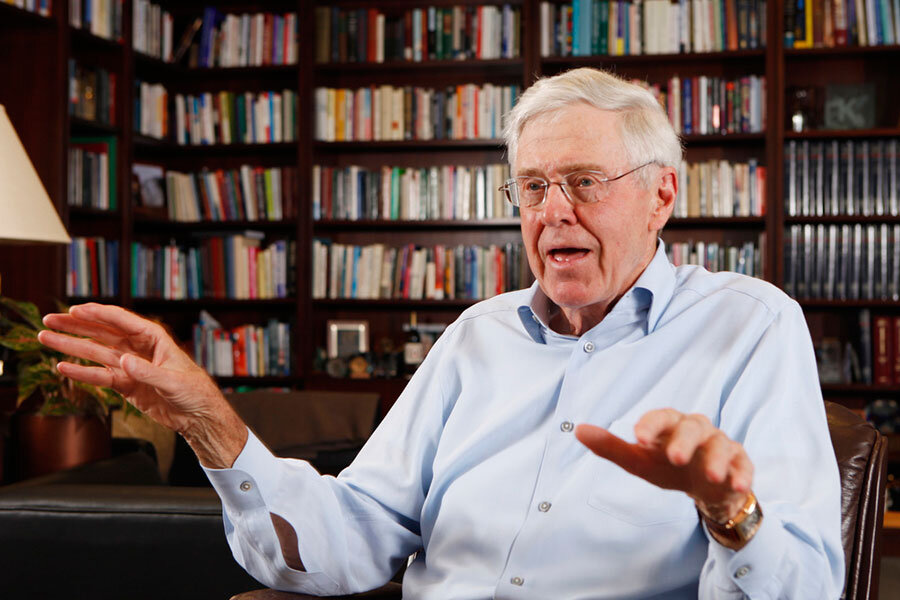The good kind of political money
Loading...
Now that Jane Mayer has chronicled how the Koch brothers’ empire has funded the extreme right, we know in excruciating detail how dollars can hide in the extremist shadows. Although her powerful, almost-400 page book "Dark Money" brilliantly chronicles the poisonous impact of dark money on the conservative movement, it says nothing about the toxic impact of money on the left. And it teaches us precious little about the antidote to the poison.
But let’s resist the immediate temptation to call the antidote “light money.” It also obscures the deeper difference between the two. The contrast between the poison and the antidote is more than the contrast between secrecy (“dark”) and transparency (“light”). To evoke the contrast more fully, a better designation may be “wall money” vs. “bridge money.”
Wall money is:
- hard to trace to its source (camouflaged)
- centralized in the hands of the very wealthy (elitist)
- associated with political ideas on the fringes (extremist); and
- designed to polarize one “side” against another (divisive).
In other words, wall money is about using vast amounts of money to amplify the voices of a few at the expense of the voices of the many.
One can recognize wall money immediately because of its signature quality: It is designed to raise barriers between “them” and “us” even higher than they are already. It is more about against than it is about for. It is against an enemy, and that enemy is often other Americans who hold different points of view. The other may be racial or religious, or it may ideological. But it always has an edge of hostility. The wall is about keeping the “good guys” separate and protected from the “bad guys.” And the worse the “bad guys” are portrayed, the higher the wall must be raised.
Conversely, the opposite is “bridge money.” It is recognizable because it is:
- easy to identify and connect to its source (transparent);
- drawn from numerous and more diverse contributors (populist);
- based on core values of American culture (mainstream); and
- designed to bring many “sides” together to solve problems (unifying).
In other words, bridge money is about using money from many pockets to give everyone a voice so that sustainable solutions can be found to the challenges our country faces.
Today bridge money is both harder to recognize and harder to find. First of all, there is a lot less of it. As America polarized, so did the money. While the amount of money on the left and the right has skyrocketed, the resources for the “problem-solving” sector where citizens work together across the divide has not grown at all. In fact, some of the foundations that once provided grants to these “bridge-building” initiatives have pulled out of this vitally important arena. While candidates in national races are now throwing around a total of more than $2 billion, this “problem-solving” sector of the political spectrum is being starved.
In addition to being scarcer, bridge money is also harder to identify. By its very nature, bridge projects have a very different profile than the hyper-partisan flame-throwers. Bridge-builders have to be as humble and respectful as the wall-builders are arrogant and rude. When they bring many “sides” together and successfully find common ground, they cannot take credit. In fact, those who convene some of the most successful cross-spectrum initiatives never claim the spotlight but let others take credit.
Because of media bias, the impact of bridge money often goes unreported. Since bridge-builders don’t get the ratings that the wall-builders do, the media does not cover their activities. So even when they do good work, we, the people, never learn about them. The bridge-builders remain invisible – hidden behind the partisan fireworks.
What America needs are citizens who commit their resources to thoughtful problem-solving rather than cocky position-taking. Instead of spending, as a nation, tens of billions of dollars disuniting America, those of us who have contributed to politicians to wage war against each other now need to reconsider our priorities. We need to shift our focus away from electoral fistfights and toward the renewal of democracy.
There is obviously no “magic pill” to clean up the campaign finance mess. But today there are a wide range of solutions-oriented initiatives from which concerned citizens can select. For a broad range of liberal-leaning approaches to the problem, there is no better place to start than the excellent list of organizations outlined by Issue One. And if you want a more conservative-oriented organization that also recognizes the urgency of this threat to our democracy, check out Take Back Our Republic.
With all these options before us, let’s not just throw our precious dollars to the Democratic and Republican parties.It’s time to fund the solution, not just the problem. Before we make a political donation, let’s ask ourselves: What will benefit us more – higher walls or stronger bridges?
May our answer to that question guide how we invest our money, our attention, and, of course, our vote.
Mark Gerzon, president of Mediators Foundation, is the author of "The Reunited States of America: How We Can Bridge the Partisan Divide"







